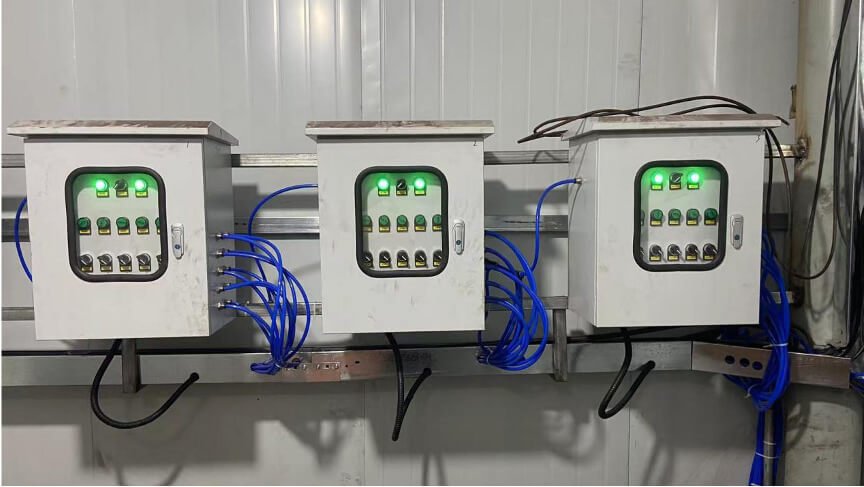Product
local control cabinet box
Local Control Panel (LCP) is an electrical control device installed near field equipment and is used to directly manage and operate the mechanical equipment connected to it. It not only simplifies wiring, but also provides an intuitive operating interface, allowing technicians to quickly respond to on-site conditions and make necessary adjustments.
Principle
The working principle of the local control cabinet is based on the various control components integrated inside it, such as relays, contactors, circuit breakers, frequency converters, etc., as well as the PLC or microprocessor that may be included. These components are responsible for receiving signals from sensors or other input devices and performing corresponding actions based on preset logic or operator instructions, such as starting motors, adjusting speed, opening/closing valves, etc. In addition, local control cabinets can also be equipped with human-machine interfaces (HMI), allowing operators to interact directly with the system through touch screens or buttons to view status information, modify parameter settings or trigger specific functions.
For more complex pneumatic conveying systems, the local control cabinet may communicate with other remote control systems (such as the SCADA system in the central control room) to ensure that the entire production line operates in a coordinated manner. This distributed control architecture improves the flexibility and reliability of the system and also facilitates troubleshooting and maintenance.Parameter
Input voltage: supports different power types, such as single-phase 220VAC, three-phase 380VAC or DC 24VDC.
Protection level: such as IP54, IP65, etc.
Control mode: manual, automatic or semi-automatic mode, depending on the needs of the specific application scenario.
Communication interface: RS485, Modbus RTU, Profibus, Profinet, etc.
Installation method: wall-mounted, floor-standing or embedded. Features and Advantages
Localized operation: Provides close-range operation convenience and reduces response time, especially suitable for immediate processing in emergency situations.
Simplify wiring: shorten cable length, reduce material cost and construction difficulty, while reducing the risk of electromagnetic interference.
Easy to maintain: The compact design makes it easier to locate problems, and only need to focus on local areas during maintenance.
Enhanced safety: With integrated safety features such as emergency stop buttons and protection mechanisms, power can be cut off quickly to prevent accidents.
Improve reliability: Even if the main control system fails, the local control cabinet can still maintain basic functions and ensure production continuity.
Flexible expansion: supports modular design to easily add new functions or expand production capacity.
Optimized performance: Each control point can be fine-tuned according to actual on-site conditions, thereby improving the efficiency of the overall system. Usage Scenarios
Local control cabinets are widely used in many aspects of pneumatic conveying systems, especially in places that require frequent operations or have special environmental requirements.- Fan and compressor station
- Valves and hoppers
- Dust removal equipment
- Food processing industry
- Pharmaceutical industry
- Chemical industry
- Building materials
- Electrical facilities
- Mining
